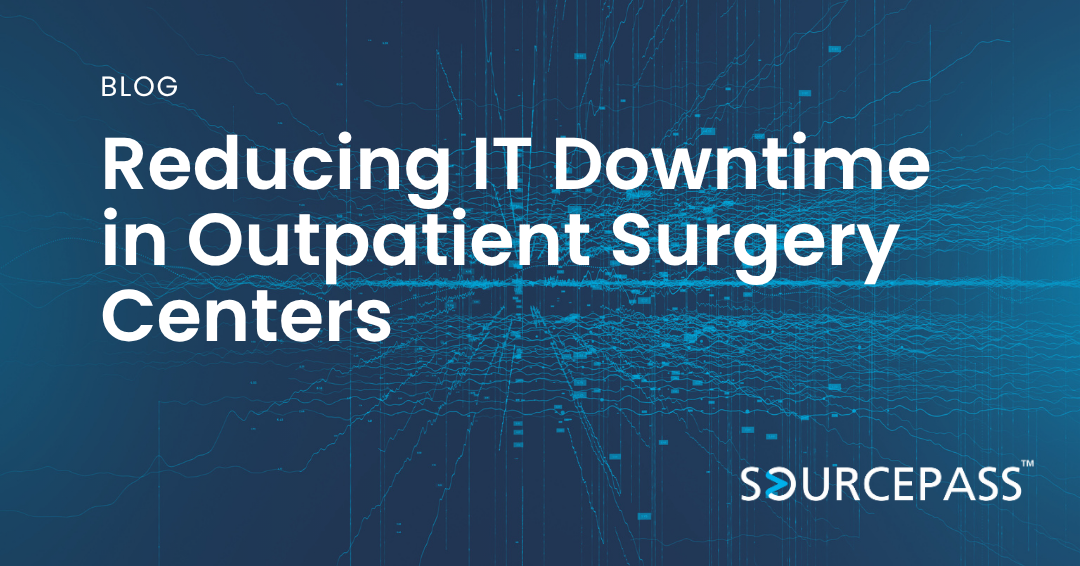Reducing IT Downtime in Outpatient Surgery Centers
Jul 23, 2025 Alex Davis Industry - Healthcare 2 min read



In outpatient surgery centers, every second matters. Delays caused by IT issues don’t just inconvenience staff—they can impact patient safety, compliance, and profitability. As more Ambulatory Surgery Centers (ASCs) rely on electronic health records (EHRs), cloud-based scheduling tools, and digital imaging, IT uptime becomes just as important as clinical uptime.
This article explores the top causes of IT downtime in surgical centers, how it affects operations, and proven ways to improve network reliability in healthcare environments.
The True Cost of Downtime in Surgical Centers
For ASCs, IT downtime doesn’t only mean a frozen screen or an inaccessible application. It can lead to:
- Delayed surgeries due to unavailable scheduling systems
- Inability to access patient charts and critical medical history
- Compliance violations if backups fail or audits are delayed
- Revenue loss from rescheduled procedures or idle surgical teams
- Reputational damage and loss of patient trust
A study from the Ponemon Institute found that the average cost of IT downtime in healthcare is over $8,000 per minute, underscoring the need for resilient IT systems.
Common Causes of Downtime in ASCs
Outpatient centers typically operate with lean staff and tight schedules, which amplifies the impact of even small IT failures. The most common causes include:
1. Outdated Infrastructure
Legacy networks, unpatched systems, and unsupported hardware often struggle to keep up with modern clinical applications.
2. Inadequate Network Redundancy
Without failover or backup internet connections, a single ISP outage can bring an entire surgical center to a standstill.
3. Poor Vendor Management
Downtime can be caused by external systems or third-party EHR providers. Without proper SLAs or vendor accountability, resolution times can lag.
4. Insufficient Monitoring
Without 24/7 IT monitoring, issues are often caught only after they’ve already disrupted care.
5. Lack of Preventive Maintenance
Failing to regularly update and test systems leads to surprise failures during peak usage, like during a full surgical schedule.
How to Improve IT Uptime in Surgical Centers
1. Conduct a Technology Risk Assessment
Start by identifying weak points in your current infrastructure: aging equipment, single points of failure, and unsupported applications. An IT health check can help pinpoint hidden risks before they become outages.
2. Implement Redundant Network Connectivity
Use dual internet service providers (ISPs) and automatic failover tools to ensure uninterrupted access to cloud-based platforms like scheduling and imaging systems.
3. Move to Managed IT Services
Partnering with a healthcare-focused Managed Services Provider (MSP) ensures 24/7 monitoring, proactive maintenance, and fast response times, without needing to hire full-time IT staff.
4. Test Backup and Disaster Recovery Systems
Regularly simulate outages and verify that your backup systems can recover mission-critical data and systems quickly, in compliance with HIPAA and other regulations.
5. Adopt Cloud-Based Tools with Uptime Guarantees
Modern surgical centers benefit from cloud EHRs, inventory systems, and staff scheduling platforms that come with 99.9%+ uptime SLAs, reducing reliance on fragile in-house systems.
What to Look for in a Healthcare IT Partner
If you’re seeking to improve network reliability in your outpatient facility, your IT provider should offer:
- Experience with healthcare compliance (HIPAA, HITECH)
- Fast support response times (ideally under 15 minutes)
- Proactive maintenance and system patching
- Data protection and secure cloud strategy
- Vendor coordination and application support
Conclusion: IT Uptime Is Patient-Critical
In the fast-paced world of outpatient surgery, IT reliability is no longer a back-office concern—it’s a frontline requirement. Surgical teams depend on technology to deliver safe, efficient, and compliant care. Investing in a robust, scalable IT infrastructure reduces downtime, improves staff efficiency, and ensures better patient outcomes.
If you're still relying on outdated systems or reactive IT support, now is the time to reassess. The cost of downtime is simply too high for your bottom line and your patients.
Subscribe To
Sourcepass Insights
Sourcepass Insights
Stay in the loop and never miss out on the latest updates by subscribing to our newsletter today!
.png?width=500&height=100&name=White%20Logo%20-%20Transparent%20Tag%20(3).png)



